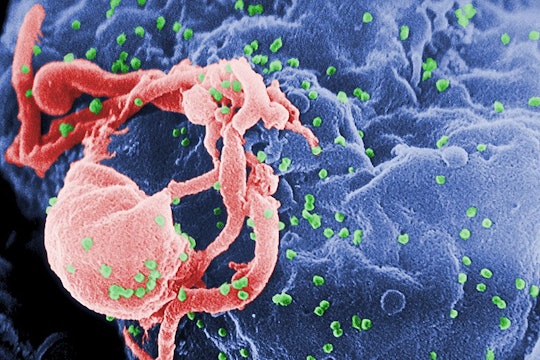
A patient was cured of HIV. What should you expect in the future?
Scientists are buoyed and see a path to future medicines
Twelve years ago in Berlin, scientists were able to cure the first HIV patient. But since then, they’ve struggled to replicate the results. Now, there’s finally news of a second person in London who’s gone into long-term remission from the virus. The details will be published in the science journal Nature on March 5th, but the patient is no longer taking antiretroviral medications, and remains free of infection after 18 months without medication.
Although scientists are calling this “long-term control of HIV,” expectations are similar to those for the Berlin patient, who has now lived virus-free for more than a decade.
A complete cure for HIV has eluded researchers for decades, due to its quick mutation rate and its supreme ability to infect and kill immune cells. These characteristics cause the virus to simultaneously destroy and evade our defenses, making designing an effective vaccine difficult. Although antiretroviral medications, invented in 1987, can help control and delay the virus’ progression, managing the lifelong medications can be both challenging and costly.
Both the London and the Berlin patients were on these antiretrovirals when they developed life-threatening blood cancers. When the cancers failed to respond to chemotherapy, doctors arranged for a bone-marrow transplant. First, a patient’s blood cells and bone marrow are destroyed. Then donor stem cells are injected into the blood, where they travel to the bone marrow and produce new, healthy blood cells. In London, the doctors performed this transplant with donor stem cells that had a mutated form of a gene called CCR5.
.jpg)
HIV particles on the surface of a cell.
A protein on the surface of white blood cells, CCR5 can normally be used by HIV like a door to enter cells. In the mutated donor stem cells, the HIV virus was suddenly unable to use CCR5 as a means to infect and spread to other cells. So when these donor stem cells repopulated the London patient’s blood, HIV was unable to enter the new cells. No signs of the virus have appeared in the 18 months since the transplantation. (It’s worth noting that this mutation in CCR5, which occurred naturally in the donor cells given to the London patient, is the same mutation a Chinese scientist recently tried to achieve in human embryos using CRISPR gene editing.)
Nevertheless, bone marrow transplants are difficult, risky procedures. The CCR5 mutation required for this procedure occurs in various parts of the world at around one percent or less, so suitable donors are rare. While no one should expect this treatment for HIV-positive patients without a desperate need for bone marrow transplantation, the success of a second HIV-free patient is a huge step forward. Knowing that the CCR5 gene plays such a substantial role may help scientists develop other forms of safe, cost-effective treatment in the future. And in the meantime, a promising vaccine trial is underway now in sub-Saharan Africa has moved to Phase 2b, meaning that researchers are studying its efficacy after earlier positive results. Good news all around.


While this transplant involved mutations in CCR5, what are your thoughts on CXCR4–another coreceptor that is exploited as an entry point for HIV? I’m not sure if that gene has been as well studied or if there is a similar mutation that results in protective effects like the delta32 mutation does in CCR5.